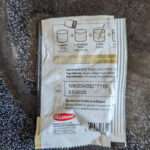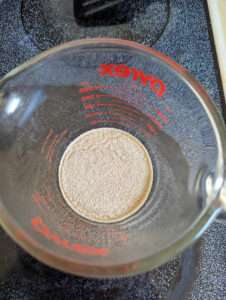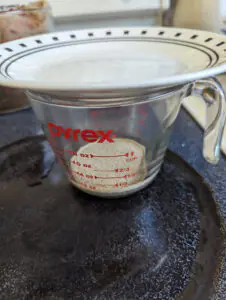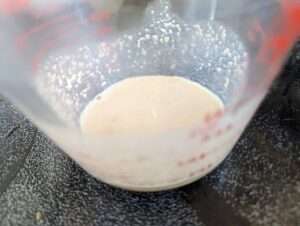A Guide to Preparing Yeast for Brewing
Once you have prepared your wort (beer) or must (mead), you will need to pitch your yeast to the carboy to get it to convert to alcohol. This is a simplified guide to preparing your yeast for the batch. Most yeast packets provide the instructions, you can easily follow them. Some yeast, the manufacturer says you can just sprinkle the dry yeast directly on the room temperature product. It has become my preference to rehydrate the yeast regardless of the directions. Why? To visually confirm the yeast colony has bloomed.
Step One

Ascertain the amount of yeast you require for your batch, you will want to use about a ten to one ratio of water to yeast. This guideline is derived directly for the packet, one packet to about 100 mL of water. Remember, this is a guideline, not rule! If you use a little more or less water, that is just fine!
Sanitise your vessel you will be rehydrating the yeast in, to ensure maximum success to the process. Add your measure of filtered room temperature water to your vessel, ensure it is room temperature. Room temperature is so very subjective, based on who controls the home thermostat. The manufacturer will often declare a temperature range, work within those parameters, and you will be fine. Brew day here, the kitchen temperature is usually about 19C/70F, that is my room temperature.
Step Two
Add the water to your vessel, then add the yeast on top of it.

Step Three
Give it a swirl (or stir with a sanitised stick), cover it to ensure the brew day mess does not accidentally contaminate it. Patiently wait about 10-15 minutes. You will know if your efforts were successful in step four.

Step Four
After you have patiently waited, remove the cover, what you should have, is a beautifully bloomed yeast. If it didn’t bloom within 15 minutes, give it another 15 minutes, maybe your room temperature did not activate it. If after about 30 minute the colony did not establish, you possibly have stale yeast. This is why I opt to not dry pitch my yeast. Time to try a fresh packet of yeast.

Errata
The manufacturers know more about their yeast than I do, they provide good guidelines in preparing their product, feel free to follow it. To steal a line from the City Steaders, “Yeast can’t read!” You might find through usage, you might find the yeast works beyond their documented expectations.
Asked no one. But what about making a yeast starter? Yes, I am aware of this, I have done my own research, done my reading, watched some videos, I haven’t tried it yet. Depending on the technique you are following, it could involve taking a measure of the wort or must, adding the yeast, and allowing it to bloom in a nutrient rich environment. You might want to do your own research before you try this method.



 To provide the best experiences, we use technologies like cookies to store and/or access device information. Consenting to these technologies will allow us to process data such as browsing behaviour or unique IDs on this site. Not consenting or withdrawing consent, may adversely affect certain features and functions.
To provide the best experiences, we use technologies like cookies to store and/or access device information. Consenting to these technologies will allow us to process data such as browsing behaviour or unique IDs on this site. Not consenting or withdrawing consent, may adversely affect certain features and functions.